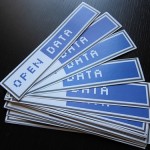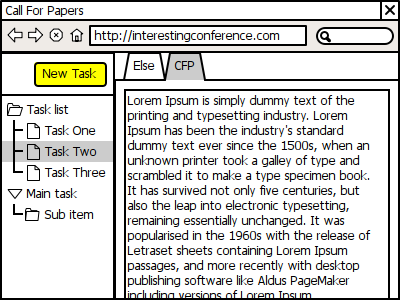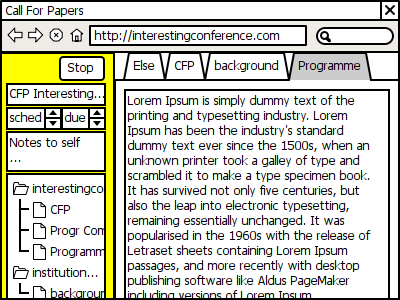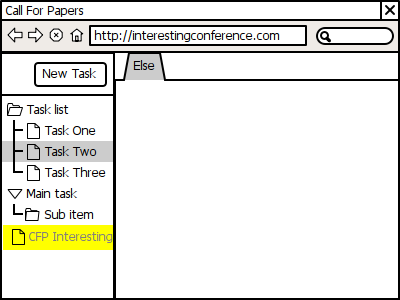I’ve been invited to talk at the World Congress on IT 2010, in the eGovernment track. Together with Beth Noveck, Ivo Gormley, and Greg Clark, we’ll have a session and panel called “Hey gov, can you hear me?”, moderated by Dom Sagolla. Arnout Ponsioen invited me to present a case from the perspective of civil society, and I chose to illustrate the possibilities of people all over the world working together in a moment of crisis: the Haiti earthquake. Here is what I had to say.
Ivo Gormly showed a summarised version of his film “Us Now”, with many examples of people working together in new ways. I want to add to that with a more in-depth look at one particular case, from the perspective of a “world citizen”.
On January 12, an earth quake destroyed Haiti, killed hundreds of thousands of people and devastated the lives of many more.
An international emergency response was immediately launched. We know the sort of images that come with that: get people and supplies to Haiti. But the disaster also had a new type of first responders: citizens from around the world helping from their own homes, offices and schools.
The internet and mobile phones have made it possible to contribute to disaster response from anywhere on the world, because, as concerned citizens, we can help in three areas:
- We can help collect information from various sources.
- We can help map that information and make it available and useful to the first responders at the scene.
- And we have the means to self-organise, mobilise the skills and talents we need, and distribute the tasks to people who want to help.
Here’s how it worked for Haiti.
Ushahidi is a platform that came into existence after the elections in Kenya, in 2007. Violence broke out, people had to flee their homes, and it was hard to get an overview of what was happening. A couple of programmers set up a system to gather eyewitness reports coming in through SMS, email, twitter, and the web, and place the incident reports on a map 1.
The software for the platform has been made freely available, and has been used numerous times since.
Within hours after the earthquake, a group of people at Tufts university had set up an Ushahidi platform, and worked with a mobile provider to set up a shortcode, 4636. Radio stations then helped to spread that number.
Messages came in from people trapped under buildings, asking for help. And also for instance from a hospital where they had 200 beds free, but no victims coming in yet. Being able to filter the messages in various ways helped people on the ground, and assessing the reports can be done by people around the world, for instance by giving a “thumbs up” or “thumbs down”.
Often the messages were in Kreyol, the local language, which few first responders spoke. And often indicating their location based on landmarks that had disappeared. So Ushahidi reached out the diaspora community to help translate and contextualise reports. For instance, they had a Skype chat channel open, to quickly get translations for urgent-looking messages.
The OpenStreetmap community came together to produce up-to-date maps of the area. OpenStreetmap is a “Wikipedia for maps”, and started in the UK, to make street maps available for free 2.
OpenStreetmap already showed the power of an online community in January 2009, when Israel invaded the Gaza Strip. The maps of Google and Microsoft were not detailed enough, and the OpenStreetmap was actually even worse. After a call-out to help improve the map, it took around 48 hours to make OpenStreetmap the most detailed map.
Al Jazeera set up an Ushahidi system with the OpenStreetmaps, to get information for their reporting.
In the case of Haiti, various companies and organsations such as GeoEye, DigitalGlobe, and Google, quickly made their satellite images available to the OpenStreetmap community. The next day, someone wrote a program to have those images imported into OpenStreetmap automatically.
It took around 6 hours to get the community started, and someone in Germany set up a server the next day, so that the available maps would be updated every 5 minutes, and also made them available to be downloaded on the Garmin GPS devices used by search and rescue teams. Those search and rescue teams also started indicating which areas they were going to move into next, to help the community around the world prioritise work.
UNOCHA asked specifically to look out for new refugee camps appearing on the images. You can just barely see a few camps on the image here. It also posed a new problem: the GPS devices did not understand the tag “earthquake:damage: spontaneous_camp”, so the community quickly decided to also tag them as “tourist campsites”, to have them appear as little tents on those GPS devices.
The result was that in 3 weeks, one of the best maps of Haiti was produced by people who mostly never had been there. Here’s an image of the Situation Room at the World Bank, with a huge printout of that map on the wall.
The World Bank understood the power of such communities, and also did something new for the damage assessment. They normally have a small team look at photos of before and after the disaster, to make a detailed damage report. This time, they worked with various universities around the world, where experts each took on part of that huge task. Normally, such a process takes 6 weeks or 2 months to complete. This time, it was done in a few days. 3
Which shows the potential of the third element.
It has become easy to mobilise and organise.
The owner of the domain name haiti.com quickly made that site available as a starting point for people to find ways to help.
People who had been working on maps before already organised themselves in for instance the Crisis Mappers Network, and a lot of the initiation and coordination of activities happened through their mailing list.
Wikis help to quickly organise information, and, as you can see here, there was a whole ecosystem of communication tools: websites, Google groups, Twitter hashtags, IRC chats, and groups on Ning, Facebook and LinkedIn.
And you can also see so-called CrisisCamps: people gathered for a day or a weekend, in schools, offices, homes, to work together to sift through the information, work on maps, and so on. With name tags, because many of those people had never met before. These happened in at least 25 cities around the world.
The Extraordinaries provide a platform for what they call micro-volunteering: things you can do for the greater good, even if you only have 10 or 20 minutes. So they started pulling in pictures from Flickr, with the tag Haiti, to filter out the ones that may contain useful information about people or places. You just answer a few questions, like “Is this picture related to the Haiti quake?”, and you can even do one or two on your smart phone while waiting for your coffee to be ready.
Another, bigger system is Sahana, a whole suite of disaster management software first developed in Sri Lanka after the 2004 tsunami. It helps to create maps, know which organisations are working where, and help match supply and demand between those, for hospitals or for other types of requests, such as aggregators, fuel, transport, and so on.
It helped for instance produce a list of 697 organisations working in Haiti, with contact details and so on, to help coordination.
So hey gov, can you hear me? What can you do to tap into this potential? First and foremost: actively break through the currently dominating view of “us” and “them”, of supplier and client.
- Work with people’s passion. Whether it is in response to a crisis, or in relation to the local or hyperlocal environment in which we live, we want to collaborate. Share responsibilities.
- Make information available. Suppress the reflex to keep data inhouse. We already payed for it once, through our taxes, trying to monetise it again generally doesn’t work out for government.
- Be what politics should be about. Affinity groups and self-selecting communities tend to create their own echo chambers, and reinforce their own beliefs. Actively connect those echo chambers, facilitate debate and bring opposing views and conflicting interests together.
Most of all: make legislation that enables the technological innovation that drives this type of citizen engagement. Sometimes legal solutions are easier and more effective than
technical solutions.
In the meantime, citizens will develop new ways to use technology. This picture doesn’t show a blueprint for a bomb, but rather a set of materials put together by the MIT Medialab, and already jokingly called the One Satellite Per Child project. It enables even kids in for instance the slumbs of Lima, Peru, to start making aerial photographs and map their own neighbourhood. The sky is the limit.
1 “Ushahidi,” in Wikipedia, n.d., http://en.wikipedia.org/wiki/Ushahidi.
2 “OpenStreetMap,” in Wikipedia, n.d., http://en.wikipedia.org/wiki/Open_Streetmap.
3 Justin Mullins, “How crowdsourcing is helping in Haiti,” New Scientist, January 27, 2010, http://www.newscientist.com/article/mg20527453.600-how-crowdsourcing-is-helping-in-haiti.html?full=true.
 The list of people signing up for the Open Data for Development Camp is growing. We’ll have people involved in defining the International Aid Transparency Initiative standards, people involved in making development data open in governments and organisations, people working on Open Access, on the Apps for Development contest, and more!
The list of people signing up for the Open Data for Development Camp is growing. We’ll have people involved in defining the International Aid Transparency Initiative standards, people involved in making development data open in governments and organisations, people working on Open Access, on the Apps for Development contest, and more!
 Two weeks ago was the
Two weeks ago was the 






 I just returned from an intense week in the UK:
I just returned from an intense week in the UK: 

